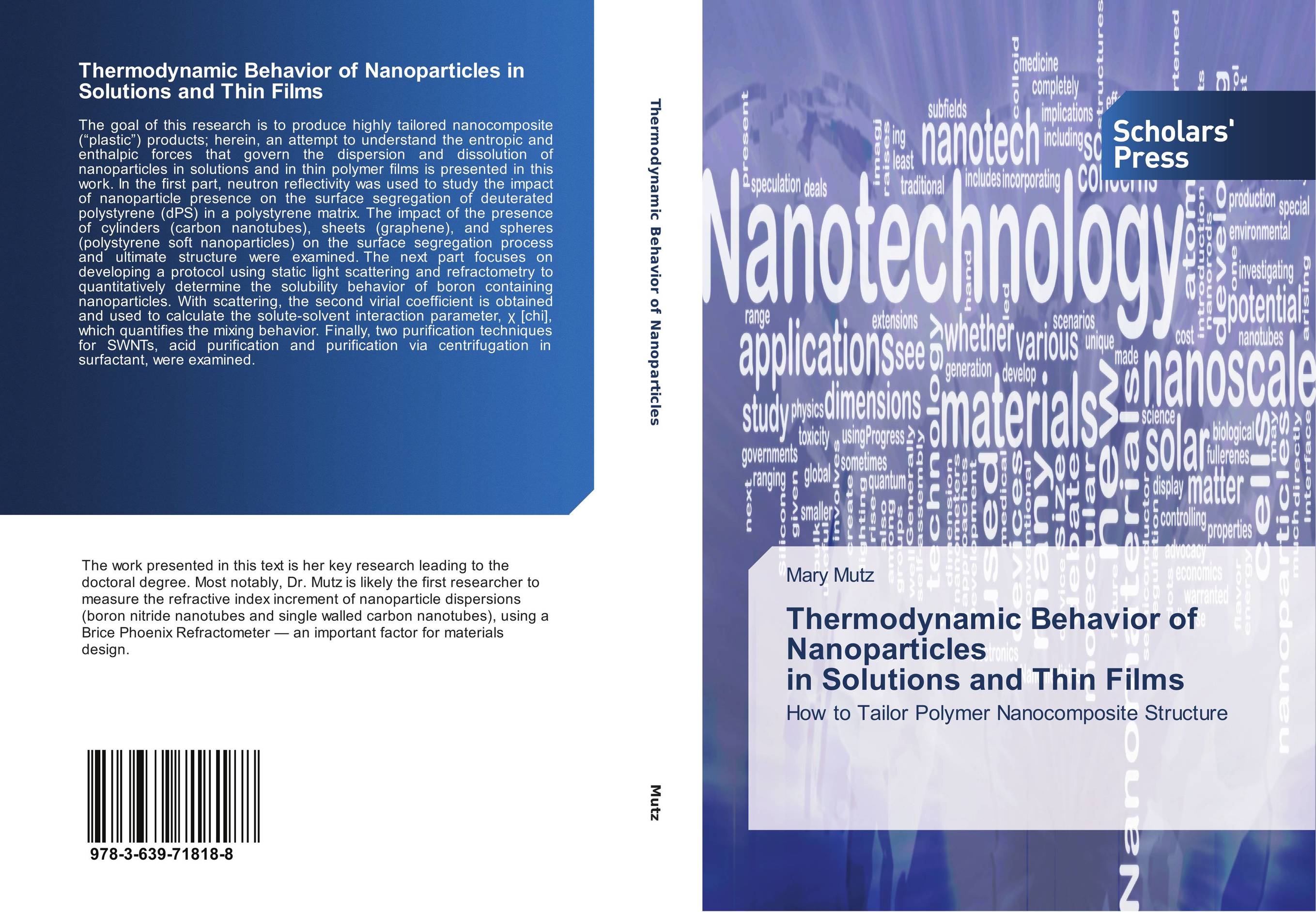| Поиск по каталогу |
|
(строгое соответствие)
|
- Профессиональная
- Научно-популярная
- Художественная
- Публицистика
- Детская
- Искусство
- Хобби, семья, дом
- Спорт
- Путеводители
- Блокноты, тетради, открытки
Thermodynamic Behavior of Nanoparticles in Solutions and Thin Films. How to Tailor Polymer Nanocomposite Structure

В наличии
| Местонахождение: Алматы | Состояние экземпляра: новый |

Бумажная
версия
версия
Автор: Mary Mutz
ISBN: 9783639718188
Год издания: 2014
Формат книги: 60×90/16 (145×215 мм)
Количество страниц: 368
Издательство: Scholars' Press
Цена: 65608 тг
Положить в корзину
| Способы доставки в город Алматы * комплектация (срок до отгрузки) не более 2 рабочих дней |
| Самовывоз из города Алматы (пункты самовывоза партнёра CDEK) |
| Курьерская доставка CDEK из города Москва |
| Доставка Почтой России из города Москва |
Аннотация: The goal of this research is to produce highly tailored nanocomposite (“plastic”) products; herein, an attempt to understand the entropic and enthalpic forces that govern the dispersion and dissolution of nanoparticles in solutions and in thin polymer films is presented in this work. In the first part, neutron reflectivity was used to study the impact of nanoparticle presence on the surface segregation of deuterated polystyrene (dPS) in a polystyrene matrix. The impact of the presence of cylinders (carbon nanotubes), sheets (graphene), and spheres (polystyrene soft nanoparticles) on the surface segregation process and ultimate structure were examined. The next part focuses on developing a protocol using static light scattering and refractometry to quantitatively determine the solubility behavior of boron containing nanoparticles. With scattering, the second virial coefficient is obtained and used to calculate the solute-solvent interaction parameter, ? [chi], which quantifies the mixing behavior. Finally, two purification techniques for SWNTs, acid purification and purification via centrifugation in surfactant, were examined.
Ключевые слова: Thermodynamics, Dispersion, nanoparticles, Materials Science, carbon nanotubes, chemistry, solubility, Purification, Polymers Chemistry, Refractive Index Increment, Neutron Reflectivity



